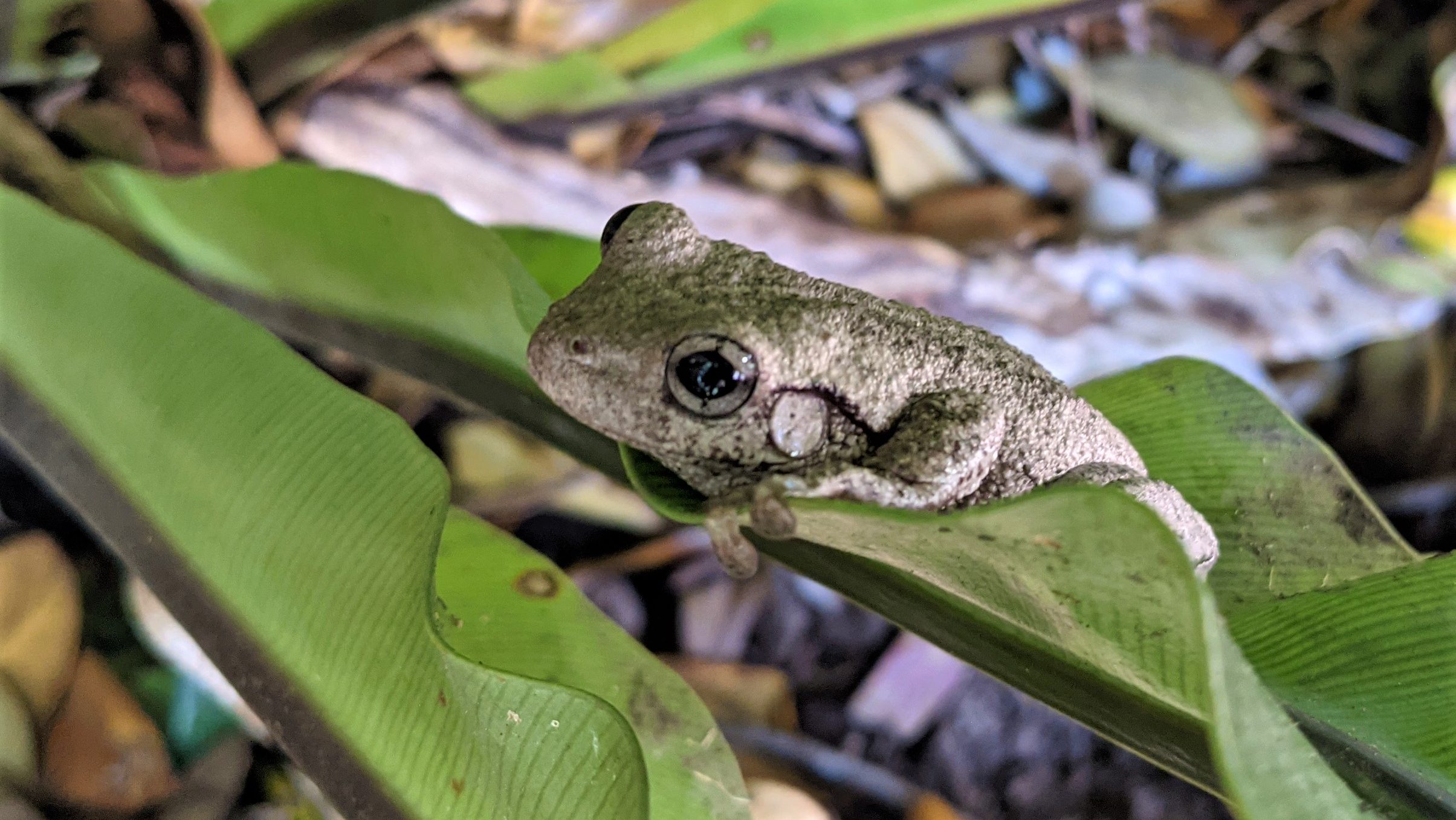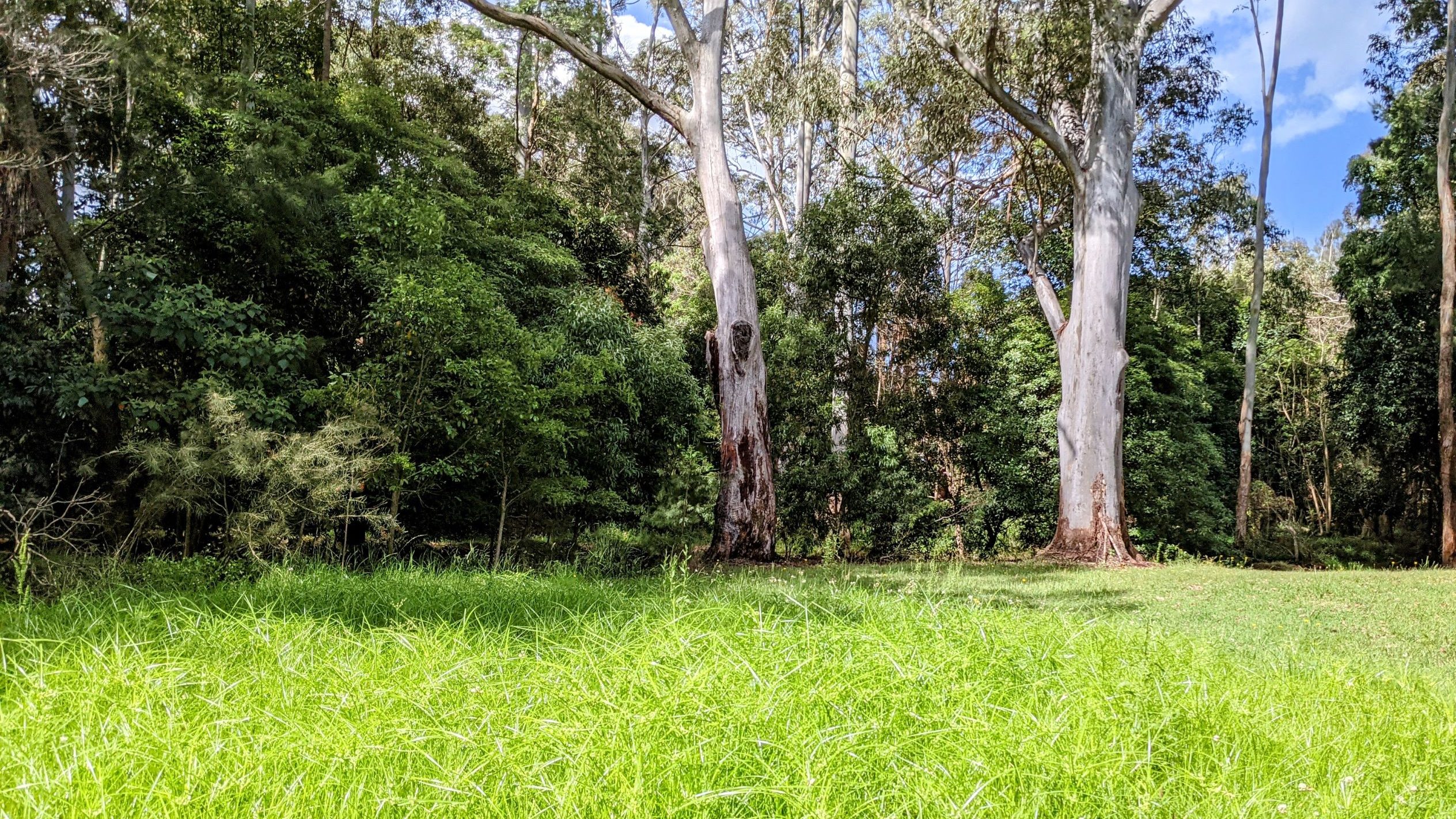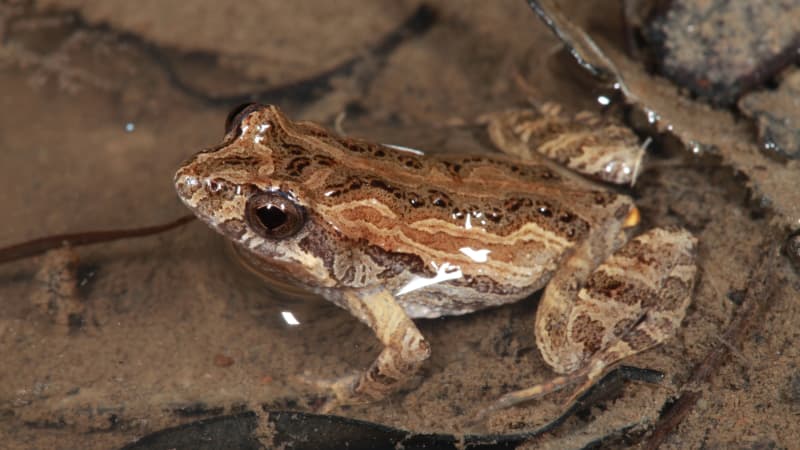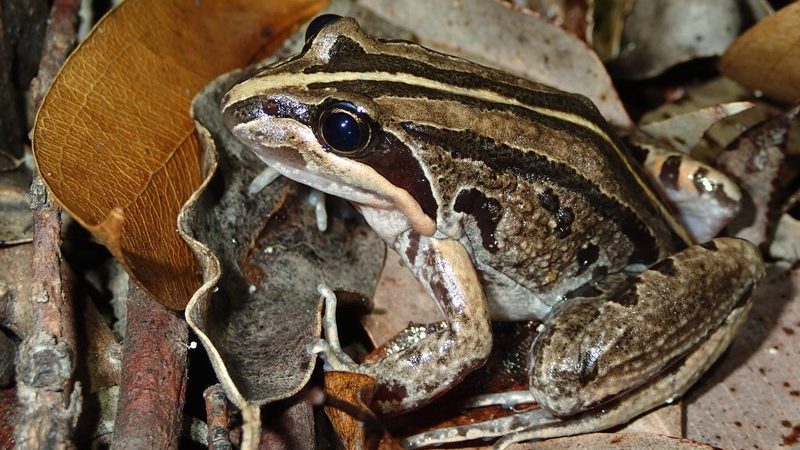Take part in Australia’s biggest frog count during FrogID Week. Frog ID Week is on between 12 – 21 November. Australia is home to about 240 species of native Amphibians, all of which are frogs. In urban areas, human development has reduced the natural habitat available to frogs. FrogID Week is a great way to learn about frogs living in your backyard.

Scientific name: Litoria peronii
Help to record frog calls during FrogID Week using the free app and uncover which frogs live in your backyards, local parks and bushlands. Your recording can help identify changes to local frog populations and inform frog conservation across Australia. Download the free FrogID app today and help us count Australia’s frogs.
This park in the middle of urban Sydney might not look like much, but after a few days of rain the low lying grass area became a Frog Swamp. I could hear the frogs call from 50 metres away, the closer I got the louder there were. I was able to get a great recording for FrogID Week. Listen below to the Common Eastern Froglets Crinia signifera and Striped Marsh Frogs Limnodynastes peronii calling.

Common Eastern Froglet Crinia signifera

This tiny frog is only 3cm in size and if very commonly heard but rarely seen. They are common and widespread across south-eastern Australia. Their call is a repetitive “crick, crick, crick, crick, crick”.
Striped Marsh Frog Limnodynastes peronii

This large species of frog is found down the east coast of Australia. Their call is a single, short “tuk” or “whuck” which is repeated every few seconds.
Join me on Tuesday 16 November at 2pm for a FREE live virtual excursion to learn more about Frogs and how you can get involved in FrogID.
If you can’t join me for the Live session you can watch the Fascinating Frogs video to find out more.
You can create a frog friendly garden
Frogs are very sensitive to water loss because their skin is permeable. This also means Frogs are really sensitive to chemicals. Frogs can end up absorbing chemicals that could harm or potentially even kill them. Pesticides can also deplete the frogs’ food source.
You can encourage frogs to come to live and breed in your backyard by creating a frog friendly garden. Create a small shallow pond in an area that is partly shaded or install a Frog Hotel.
Reducing chemicals use in your garden Creating a Frog Habitat Be patient and wait, if you build it they will come
Use FrogID to research the frogs that are found in you local area. This will help you work out what kind of habitat will suit your backyard best.
You can use PVC pipe to create a habitat for tree frogs. Frog Tubes are an easy way to provide somewhere safe for tree frogs to live too. Use a 1 metre length of PVC pipe and stick the base in the ground to tie them to a tree. It provides a really moist environment for tree frogs to hide in.
A Frog Hotel is a great option for tree frogs and provide them a safe place to hide during the day. Check out the video below for step by step instructions on how ro make a Frog Hotel.
Discover more about Frogs and some of their amazing adaptions. There are also lots of information to create a frog friendly backyard in your area.

